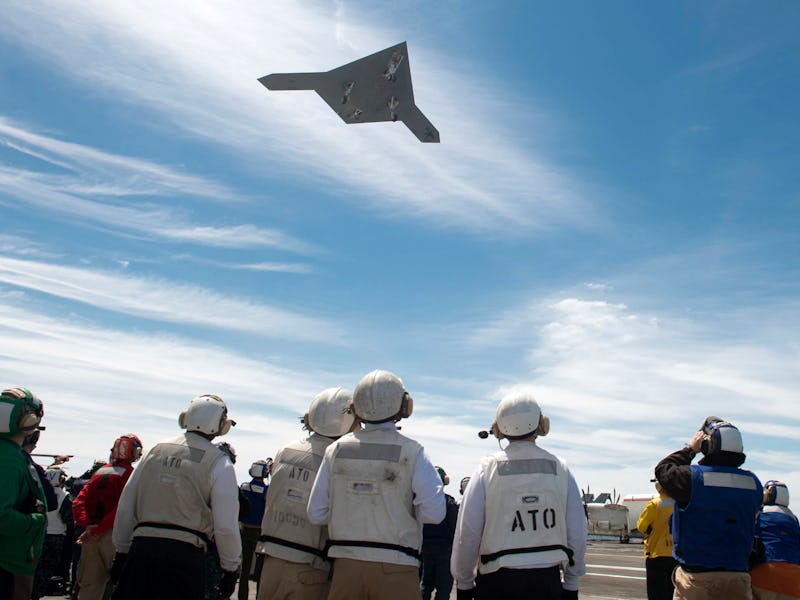Drones Can be Rendered Invisible With New Teflon Cloaking Technology
By reflecting their surroundings, UAVs can disappear.

Just as we’re getting used to the idea of drones flying overhead, the University of California-San Diego has figured out how to make them invisible.
While making a drone literally invisible isn’t possible, covering it in a sheet that reflects its surroundings — like a fluid mirror — has a similar effect. The UCSD researchers just published their work in the journal Progress In Electromagnetics Research and, yes, they can do that.
It’s not the first time scientists have come up with devices conferring some degree of invisibility — the military potential, after all, is enormous — but all of the previous designs have been bulkier than the object itself, somewhat defeating the purpose and making the technology less useful for flying vehicles.
Inspired by Harry Potter’s Invisibility Cloak, the UCSD cloaking device is an incredibly thin Teflon sheet studded with tiny circles of highly reflective ceramic. Their design isn’t just thinner than previous designs; it also absorbs less light. A problem previous devices have faced is a drop in brightness in the area immediately surrounding the cloaked object, like an encompassing shadow, caused by the absorption of light. By using non-absorptive Teflon instead of metal, the engineers managed to sidestep this problem, so the cloaked object looks completely flat.
The Homeland Defense and Security Information Analysis Center is, naturally, interested in using the new technology for drones — not just because they’re visually stealthy, but also because it avoids leaving an electronic or infrared signature, making it easier to fly below enemy radar.
The invisibility cloaks haven’t officially been put to use yet. But then again, we’ll never really know.